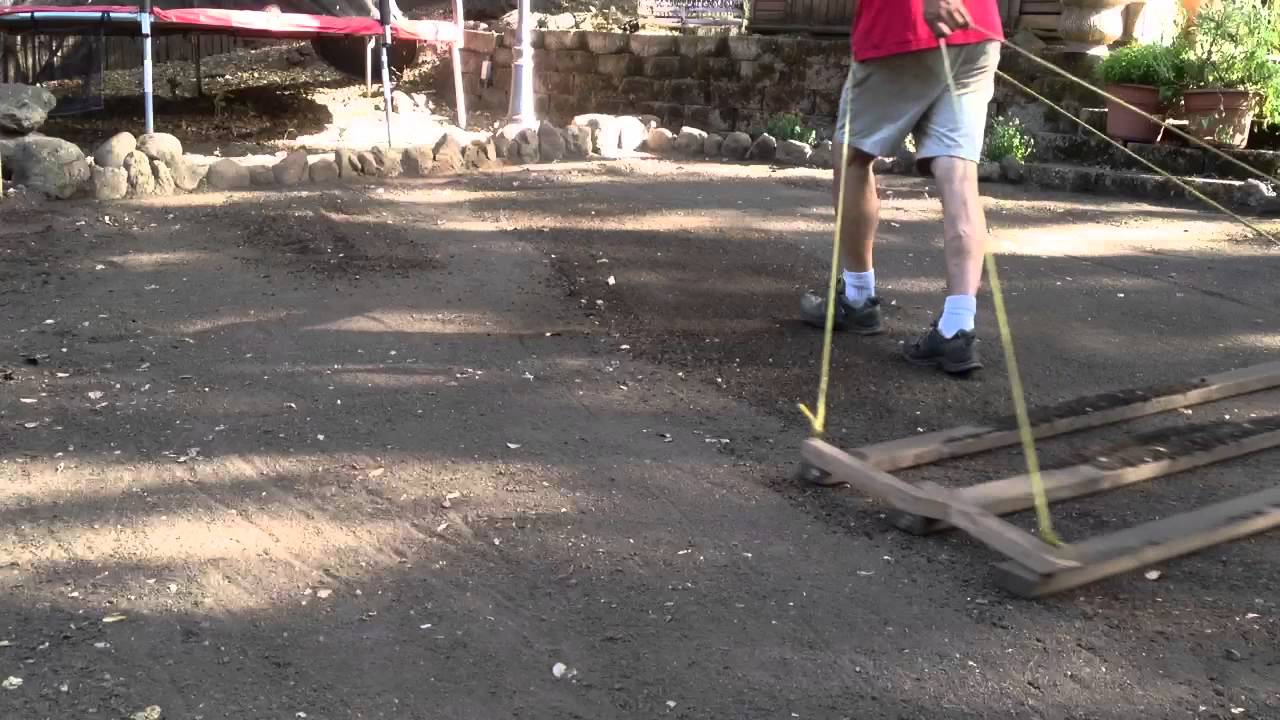Grading a yard by hand may seem daunting, but achieving it is not impossible. Whether you want to level out uneven terrain, create proper drainage, or prepare the ground for landscaping projects, grading your yard can significantly improve its overall appearance and functionality.
The question is how to grade a yard by hand. While various methods and tools are available for this purpose, this article will guide you through grading a yard by hand. From understanding the importance of grading to step-by-step instructions on effectively accomplishing it, we will provide you with all the essential information you need to transform your outdoor space into a smooth and well-graded landscape. So grab your tools and let’s get started on mastering the art of yard grading.
Prepare Your Lawn for Grading
Preparing your lawn for grading is essential in maintaining a healthy and visually appealing outdoor space. Proper grading is crucial if you are planning to install a new patio, create a leveled area for gardening, or simply improve the overall drainage of your yard. This process involves reshaping the contours of your lawn to ensure that water flows away from your home and toward appropriate areas.
By preparing your lawn for grading, you can prevent issues such as standing water, erosion, and potential damage to nearby structures.
Replanting Your Grass
Replanting your grass is crucial in achieving a lush and healthy lawn. After completing the necessary tasks, such as removing debris or old grass, preparing the area for new grass seed is important.
Once you have applied topsoil to the designated areas, it’s essential to flatten them for optimal seed growth properly. To accomplish this, there are multiple methods you can employ. One option is using a lawn roller, easily obtained online or at gardening stores like Amazon. This handy tool helps create a smooth and even surface by compressing the soil and removing air pockets.
If you don’t have access to a lawn roller, an alternative method involves utilizing the back part of an iron landscaping rake. Gently maneuvering it across the topsoil will help level out any uneven spots, ensuring proper seed coverage.
In some cases, you may need to rely on your own feet to flatten out certain areas where topsoil has been placed effectively. This can be done by walking over these sections carefully and evenly distributing your weight.
By paying attention to these details during the grass replanting process, you’ll be setting yourself up for success in establishing a vibrant and thriving lawn. Remember that thorough preparation is key when striving for optimal results.
Why is it Important to Grade Your Yard?
Grading your yard might not be the most glamorous task on your list, but it holds immense importance for your property’s aesthetic and structural integrity. The grading process involves leveling and sloping the ground to ensure proper drainage and prevent water accumulation. Proper grading helps direct rainwater away from your home’s foundation, preventing potential damage such as basement flooding or soil erosion. By controlling water flow, grading also aids in maintaining a healthy lawn by minimizing oversaturation.
Moreover, grading is key in enhancing curb appeal and creating an inviting outdoor space. A well-graded yard provides a smooth surface for landscaping projects, making installing garden beds, pathways, patios, or even a swimming pool easier without encountering major obstacles.
Plan Your Grading Project
When undertaking a grading project, it is essential to invest some time in planning beforehand. A clear plan will ensure you have all the necessary tools and materials readily available, saving you from unnecessary stress, inconvenience, and multiple trips to the store. Nothing is more frustrating than starting a project only to realize you need vital items, causing unnecessary delays.
Planning can minimize the chances of unexpected obstacles and ensure a smooth and efficient workflow. Moreover, having everything organized from the beginning will prevent your weekend from being swallowed up by what was supposed to be a simple task. So take a few moments to strategize your grading project before embarking on it – your future self will thank you for it!
Recommended Tools
When embarking on a lawn regrade project, it is essential to have the right tools and equipment readily available. To ensure a successful outcome, I strongly recommend having the following items on-hand:
- Iron Rake: This tool is crucial for efficiently removing debris, rocks, or old grass from the area before regrading.
- Spade: A sturdy spade comes in handy when digging trenches or removing excess soil during the regrading process.
- Flathead shovel: This versatile tool facilitates spreading and leveling the topsoil evenly across the lawn.
- Wheelbarrow: An invaluable asset for transporting heavy loads of topsoil to different sections of your lawn for filling low spots.
- Topsoil for fill: High-quality topsoil is necessary to level out uneven areas and create a solid foundation for healthy grass growth.
- Grass seed and seed mulch: Selecting appropriate grass seed specific to your climate and lawn needs is vital. Seed mulch helps retain moisture and protects newly seeded areas from erosion.
- Hose to water in the new seed: A reliable hose allows you to easily provide adequate water for germination and establishment once the seeds are sown.
With this range of recommended tools, you will be well-equipped to tackle your lawn regrade project effectively while ensuring optimal results that promote lush, beautiful greenery in your outdoor space.
Conclusion:
grading a yard by hand may seem like a daunting and labor-intensive task, but with proper planning and execution, it can be accomplished. Following the steps outlined in this article, homeowners can ensure that their yard is properly graded to prevent drainage issues and promote healthy plant growth. Taking the time to assess the current state of the yard, create a grading plan, gather necessary tools and materials, execute the grading process carefully, and monitor the results will result in a well-graded yard. So don’t hesitate to put in the effort required for hand grading your yard – your outdoor space will thank you!





























